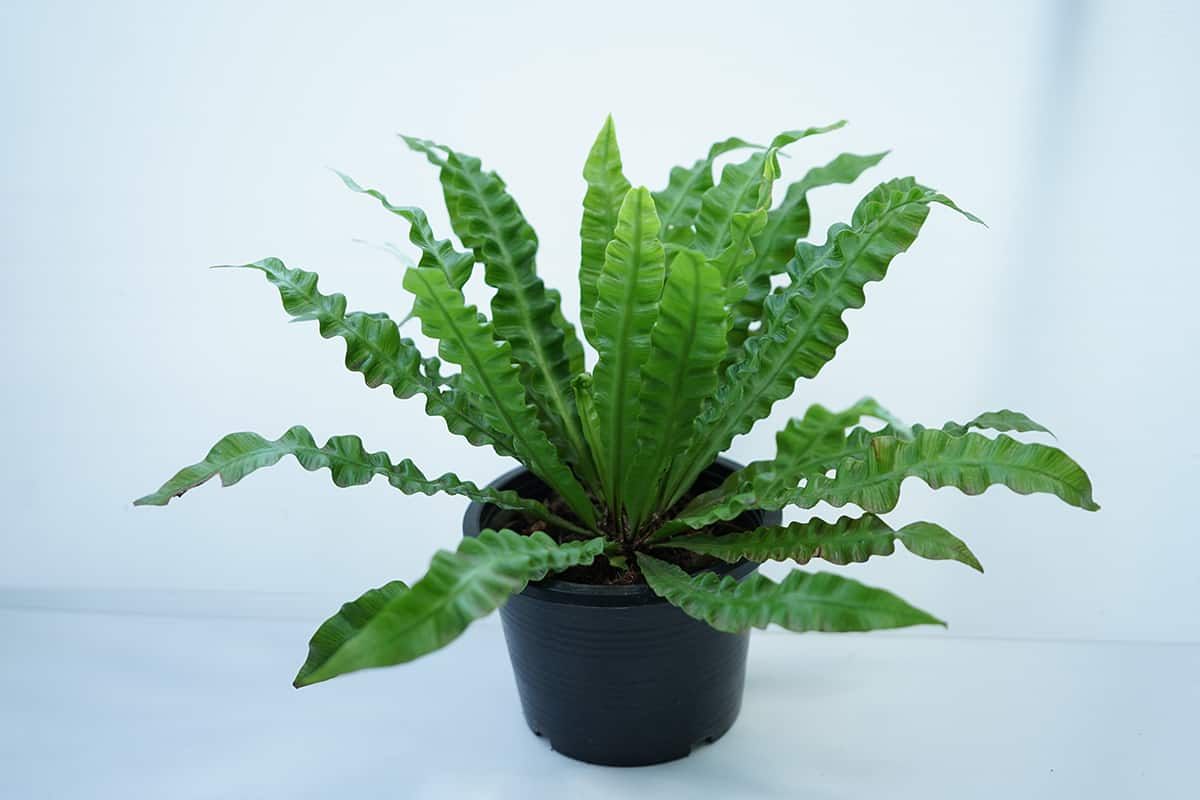The Crispy Wave Fern, with its distinctive ruffled leaves, can be as finicky as it is beautiful, especially when it comes to maintaining its lush, crinkled texture. A common sight on windowsills, it demands just the right amount of moisture and light to thrive. Knowing how to strike this balance means the difference between a fern that’s a vibrant green showpiece and one that’s, well, less than crisp.
Here’s how to care for your Crispy Wave Fern to help it reach its full potential.
| Common Name | Crispy Wave Fern |
| Botanical Name | Japanese Asplenium nidus ‘Crispy Wave’ |
| Family | Aspleniaceae |
| History & Origin | Mutation of Japanese Asplenium, selectively bred for its waves |
| Plant Type | Evergreen perennial indoor fern |
| Mature Size | Up to 2 feet wide and tall |
| Sun Exposure | Bright, indirect light |
| Soil Type | Loose, well-draining potting mix |
| Soil pH | Slightly acidic to neutral |
| Temperature | 60-72°F (15-22°C), avoid sudden temperature changes |
| Watering | Keep consistently moist, not waterlogged |
| Fertilizing | Monthly, balanced liquid fertilizer at half strength |
| Hardiness Zone | Indoor plant or USDA Zone 11 outdoors |
| Toxicity | Non-toxic to pets and humans |
| Common Problems | Root rot, brown fronds due to dry air or overwatering |
Table of Contents
Propagation
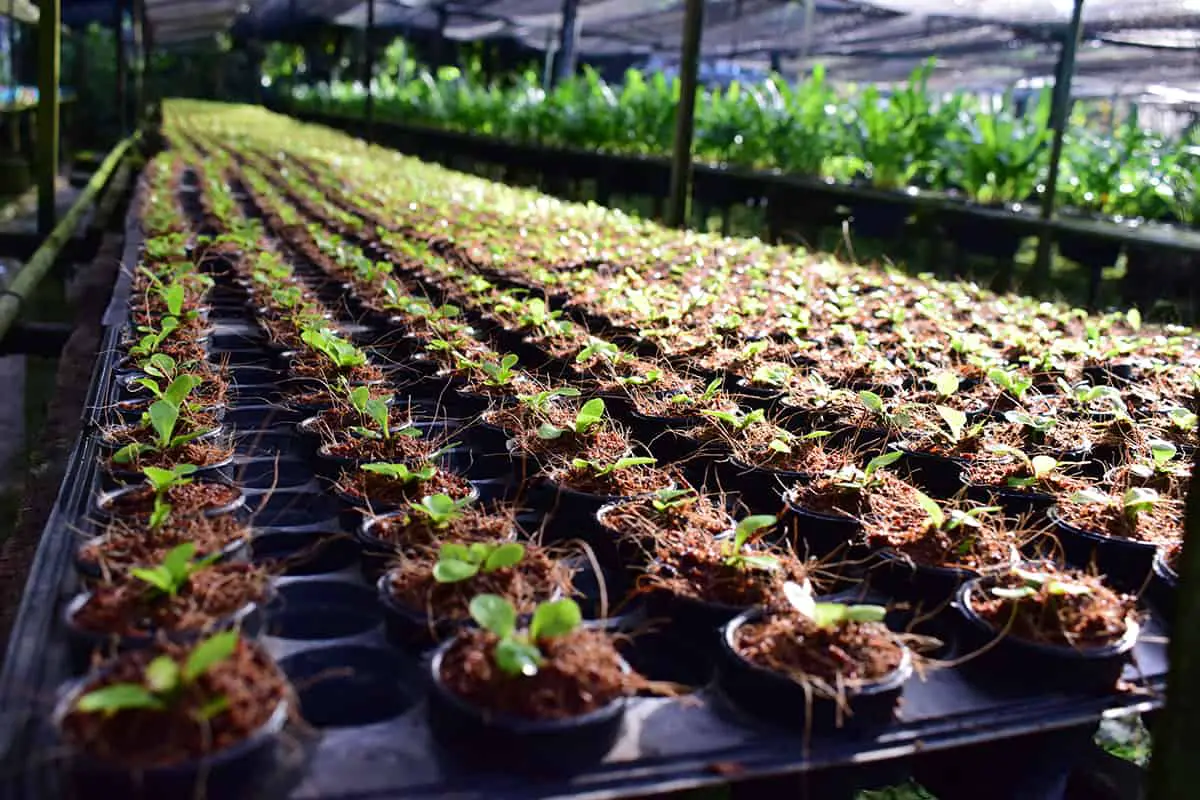
Crispy Wave Ferns can be propagated through spores or offsets. When you notice spores on the underside of the leaves, you can collect them to start new plants. It is important to understand the fern’s life cycle for successful propagation.
The first step is to let the spores mature. When they turn brown and dry, gently brush them off the fronds onto a sheet of paper. Mix these spores with a sterile potting medium in a shallow container. Keep the medium moist by misting it regularly. Ensure proper humidity by covering the container with a clear plastic cover.
After a few weeks, you should see tiny prothalli, which are the gametophyte generation of ferns. These heart-shaped structures will begin to produce both male and female reproductive parts. Once fertilization occurs, a new fern plant will emerge, and you can transplant it.
Another method of propagation is taking offsets from a mature Crispy Wave Fern. Look for small shoots growing from the main plant’s rhizomes. Carefully separate these offsets from the parent plant, ensuring each offset has its own root system.
Next, plant these offsets in a suitable potting mixture that retains moisture well. Keep the soil damp, but not saturated, and provide indirect sunlight for your new Crispy Wave Ferns. With patience and proper care, your ferns will grow and thrive.
Light
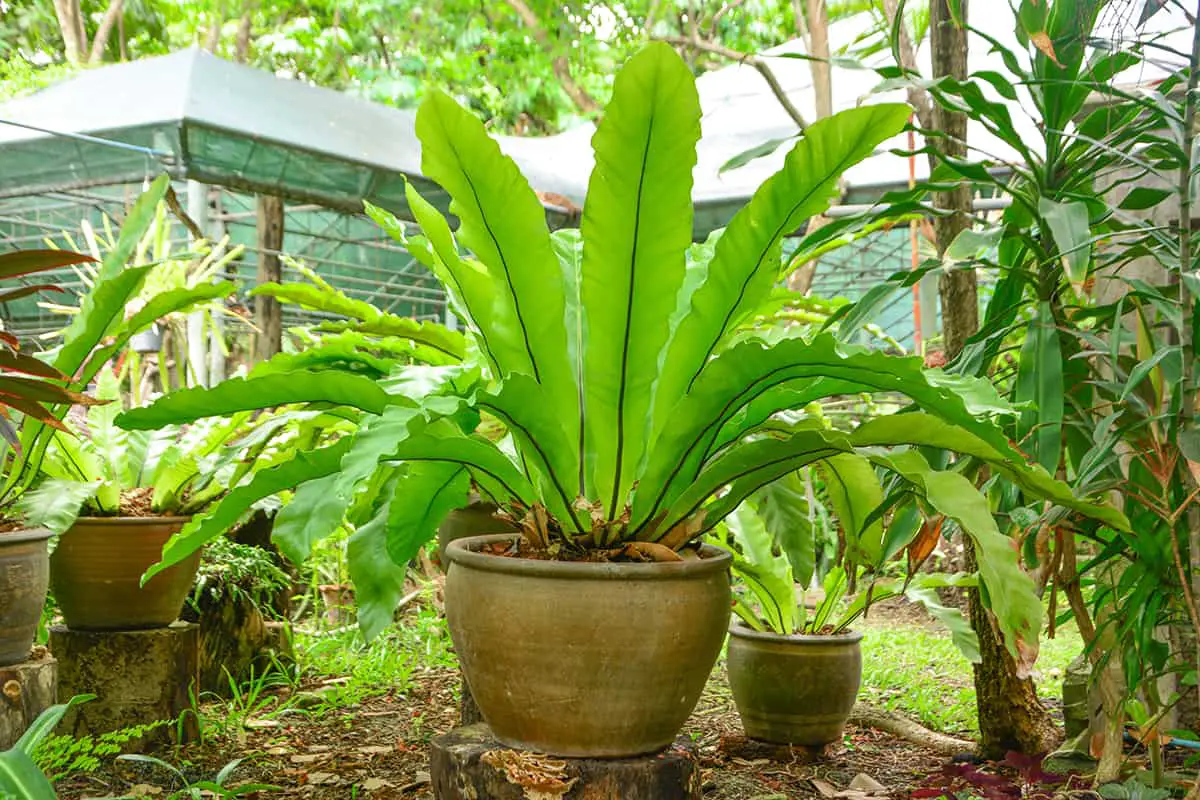
A Crispy Wave Fern thrives in moderate to bright, indirect light. Position your fern near a north-facing window for the best results. Direct sunlight might scorch the delicate fronds, so it’s crucial to avoid extreme sun exposure.
Keeping your Crispy Wave Fern in proper lighting helps maintain its unique, wavy leaf pattern. A well-positioned fern will grow healthier and experience fewer problems, such as yellowing leaves or slow growth. If the light is insufficient, you may notice your fern’s fronds becoming dull or losing their signature wave pattern.
It’s essential to monitor your Crispy Wave Fern’s condition and adjust its position as needed. If you observe any signs of stress, like wilted or discolored foliage, try moving the plant to a location with slightly different light conditions. Remember, maintaining the right balance of light is essential for a thriving, vibrant fern.
Soil
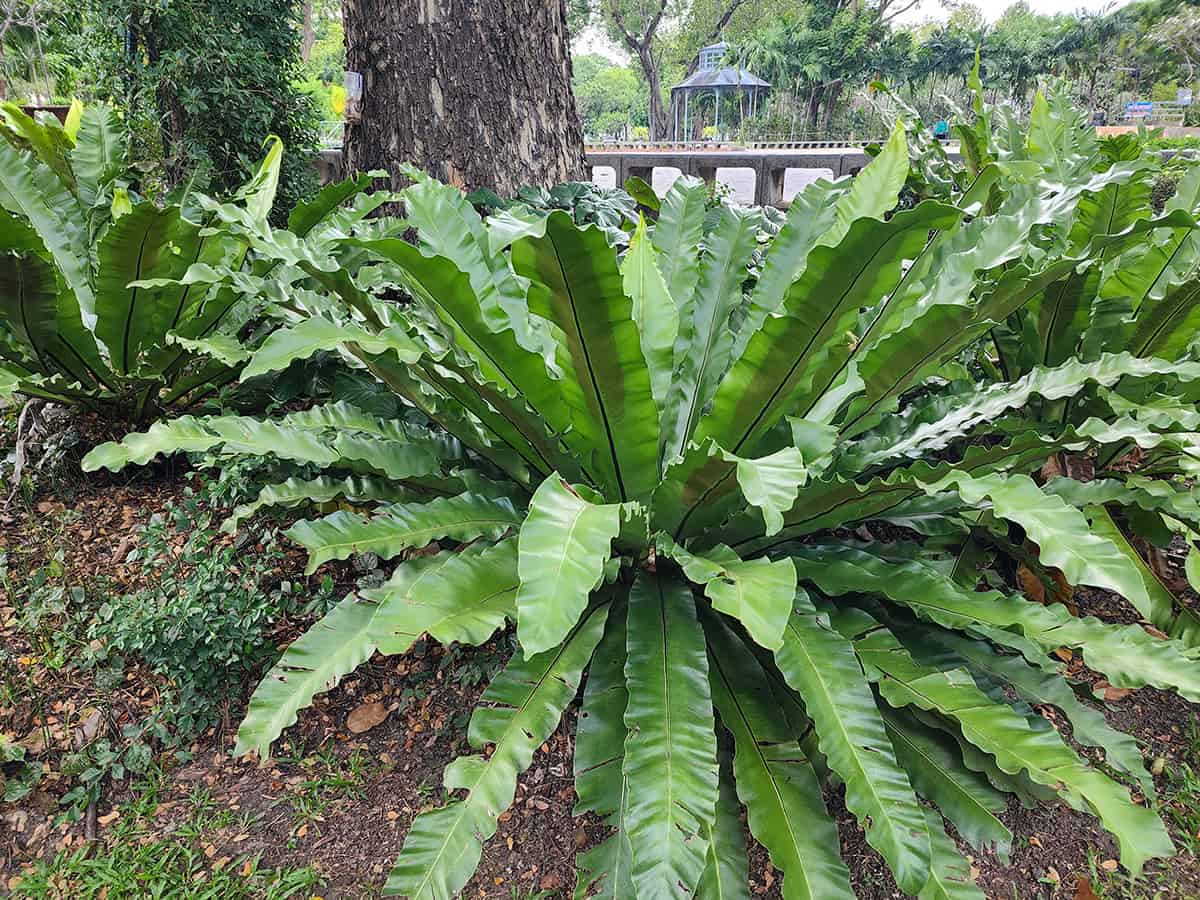
This fern thrives in well-draining, loose, and organic-rich soil. The soil must promote airflow around the roots while retaining adequate moisture.
One way to create the ideal soil mix is to combine equal parts of standard potting soil, peat moss, and perlite. This mixture ensures proper drainage and provides the necessary nutrients for healthy growth. Peat moss plays a vital role in retaining moisture, while perlite increases aeration in the soil.
Keep a close eye on the moisture levels in your Crispy Wave Fern’s soil. They require consistent moisture but not soggy conditions. To achieve this balance, water your fern when the top inch of the soil appears dry. Be careful not to overwater, as this can lead to root rot – a common issue among ferns.
It’s essential to provide the right nutrients to support your Crispy Wave Fern’s growth. Apply a slow-release fertilizer during the active growing season, following the package instructions.
Water
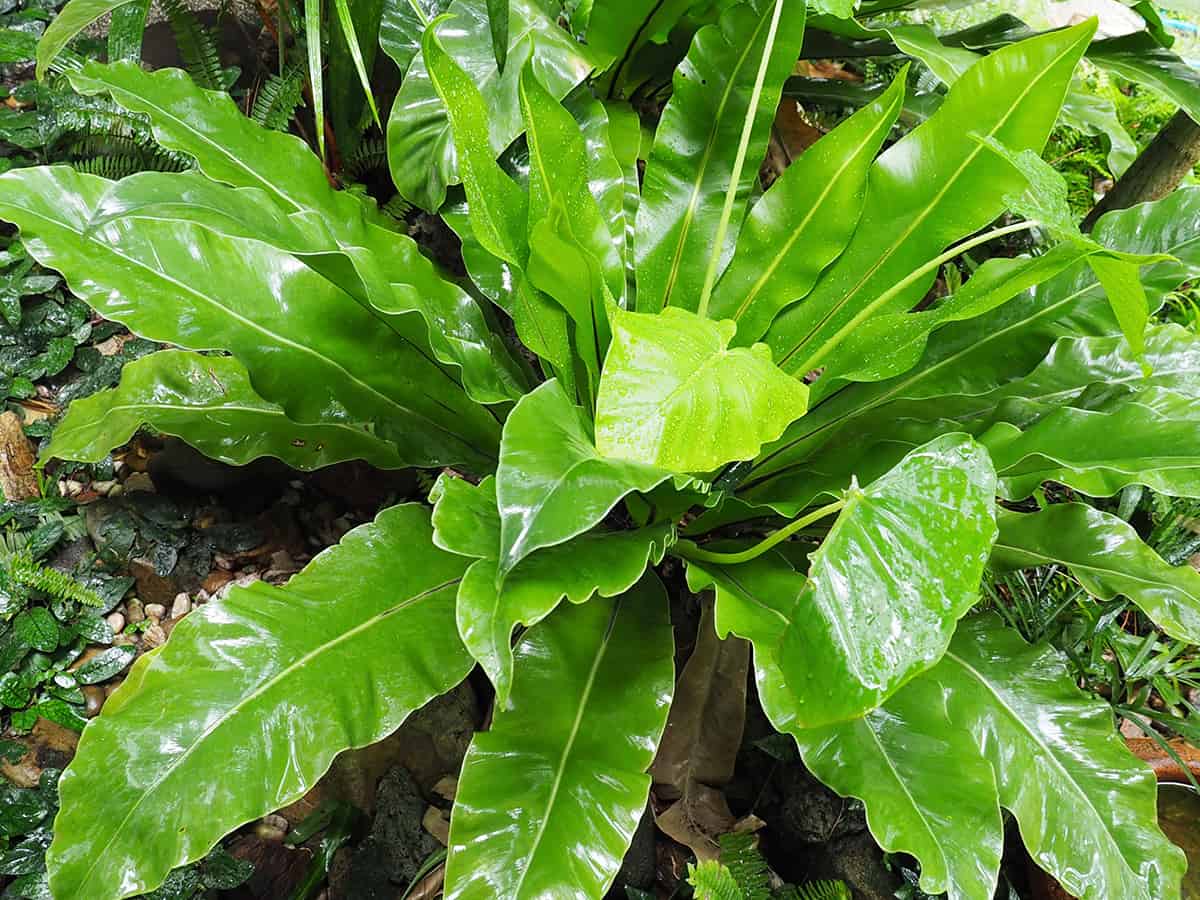
Regularly provide room temperature or lukewarm water to keep the soil moist, but not soggy. Overwatering can lead to root rot, so it’s essential to find the right balance.
A useful technique for maintaining moisture is bottom watering. Place your fern in a tray or container filled with water, allowing the plant to soak up the water from the bottom. This approach helps ensure the roots receive the necessary hydration without causing damage to the foliage.
Keep an eye on the humidity levels, as Crispy Wave Ferns thrive in humid environments. If your indoor environment has low humidity, consider using a humidifier or placing the plant on a tray filled with water and pebbles. This creates moisture around the fern without direct contact with the water.
Occasionally check the soil moisture with your finger to understand the watering schedule better. As a rule of thumb, water your fern when the top inch of the soil feels dry. Adjusting the watering routine according to the season and temperature will help your Crispy Wave Fern stay healthy and vibrant.
Temperature and Humidity
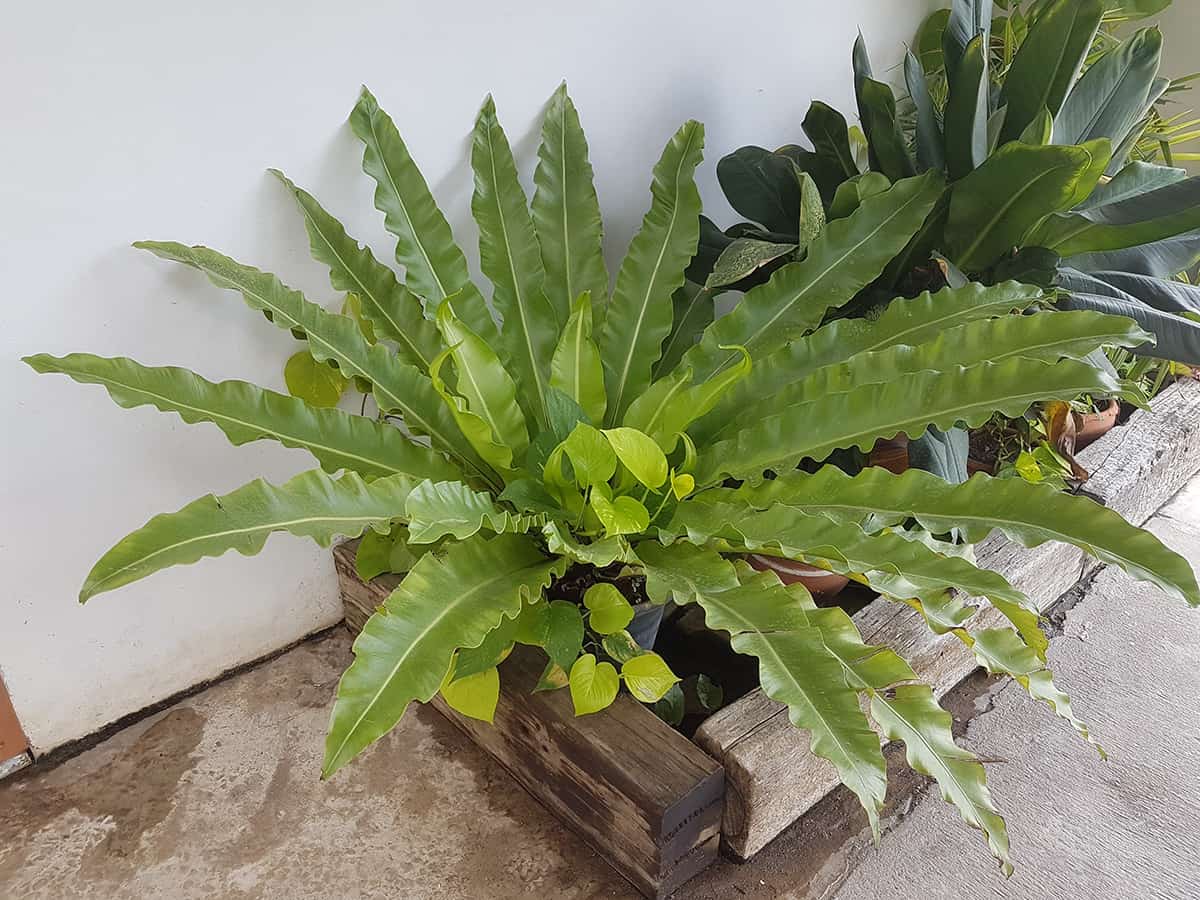
Caring for a Crispy Wave Fern starts with maintaining the right temperature and humidity. Your fern thrives in cooler temperatures, ideally between 60°F and 72°F. Avoid placing your fern near sources of heat or cold drafts, as this may cause stress and harm the plant’s growth.
Aside from temperature, maintaining adequate humidity is crucial for your fern’s health. Crispy Wave Ferns prefer high humidity levels, as found in their natural habitat. To achieve this, place your fern near a humidifier or on a tray of water with pebbles to elevate the pot above the water level. This keeps moisture around your fern without soaking the roots.
In addition to using a humidifier or a pebble tray, frequent misting is another method to raise humidity levels. Misting your fern with water, several times a week, helps replicate the moist environments they are accustomed to, ensuring your plant stays healthy and vibrant.
Lastly, consider placing your Crispy Wave Fern in a bathroom with a window that provides natural light. Bathrooms with showers offer the advantage of increased humidity, which benefits your fern and supports its growth. Just remember to provide it with ample light and air circulation.
Fertilizer
Choose a slow release fertilizer with a balanced ratio (such as 14-14-14). This type of fertilizer supports the fern’s growth without causing harm.
When applying fertilizer, always follow the package instructions. Typically, you will need to apply it once every few months. It’s essential not to over-fertilize your fern, as they are sensitive to this.
Remember to water your Crispy Wave Fern well after fertilizing. This helps distribute the nutrients evenly, ensuring your fern receives proper nourishment. With attentive fertilization, your Crispy Wave Fern should thrive and maintain its unique, wavy appearance.
Pruning
A key aspect of caring for your Crispy Wave Fern is pruning. This process helps to maintain the fern’s health, appearance, and growth. As a fern owner, you should prune in late winter or early spring before new growth starts.
When pruning your fern, focus on removing old, dead, and damaged fronds. This allows the plant to use its energy efficiently for new growth. Carefully cut the fronds close to the base to avoid damaging healthy parts of the plant. Always use clean and sharp tools while pruning to reduce the risk of any disease or pest introduction.
During the growing season, regularly monitor your Crispy Wave Fern for any signs of damage or disease. If you notice any issues, act quickly and remove the affected areas. This proactive approach will ensure your fern thrives and maintains its attractive appearance.
Potting and Repotting
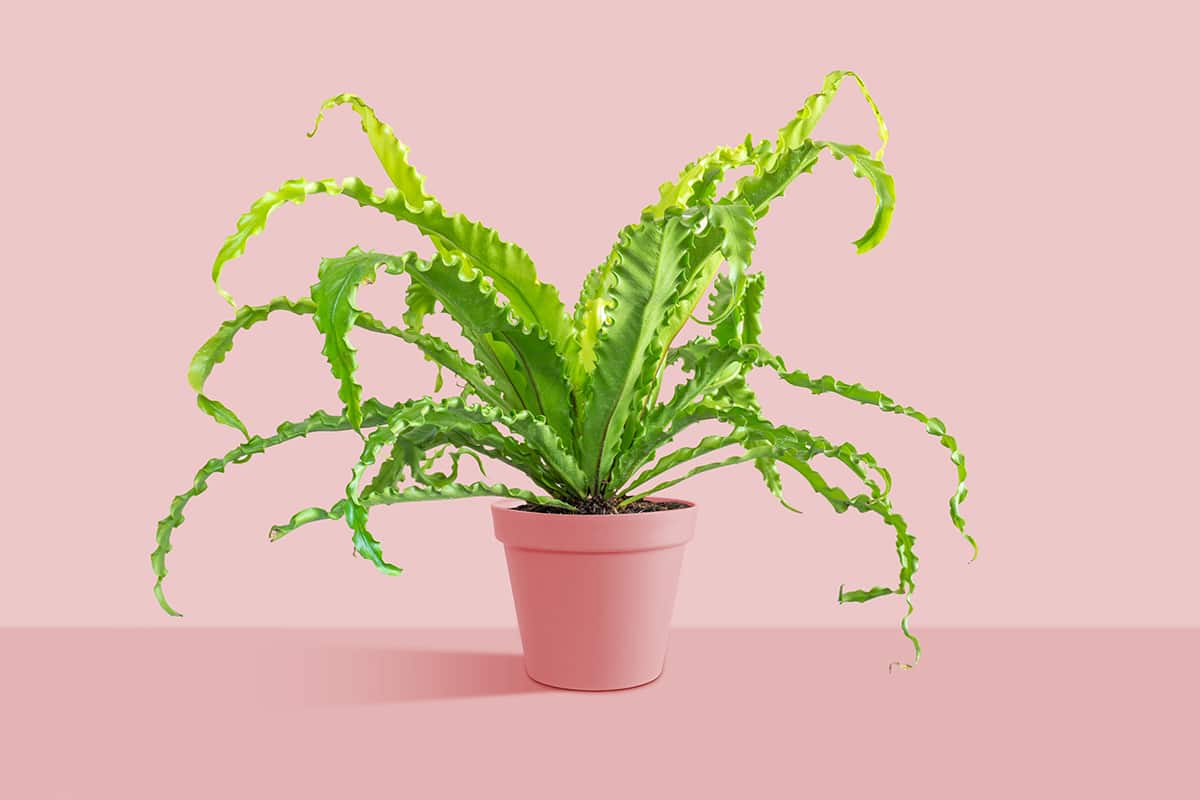
When potting your Crispy Wave Fern, choosing the right container and potting mix is crucial. Opt for a pot with drainage holes to ensure excess water can escape, preventing root rot. Fill the pot with a high-quality potting mix that retains moisture, as these ferns thrive in damp environments.
Remember that repotting is necessary every few years as the Crispy Wave Fern grows. You’ll need to gently remove it from its current pot, divide overcrowded plants and reposition them into larger containers filled with fresh potting mix. This is a crucial step to ensure the longevity and health of your fern.
To maintain the ideal humidity levels around your Crispy Wave Fern, you may want to consider double-potting. Place the fern in its own clay pot and then into a larger container. Fill the gap between the pots with moist sphagnum moss or pea gravel. This method helps increase humidity around your fern, mimicking its natural habitat, and promoting healthy growth.
Common Problems & Troubleshooting
One common problem you might face with Crispy Wave Ferns is heavy shade. To address this issue, find a location with filtered or dappled light for your fern. This ensures your fern gets sufficient sunlight without scorching its delicate fronds.
Another issue is over-watering. Crispy Wave Ferns prefer moist, well-draining soil. To avoid root rot, water the plant when the top inch of soil feels dry. You can also use a pot with drainage holes, which assists with proper moisture levels.
Pests can also trouble your fern, such as scale insects or mealybugs. To manage pests, check the plant regularly and apply horticultural oil or insecticidal soap if needed. Just make sure not to overuse these treatments, as they may harm your plant.
Heat stress can cause the leaves of your Crispy Wave Fern to become wilted or discolored. To prevent heat stress, try moving your fern to a cooler, more shaded area during extremely hot weather. If necessary, increase the watering frequency to help the soil remain moist.
Crispy Wave Varieties
Asplenium Nidus (Standard Bird’s Nest Fern)
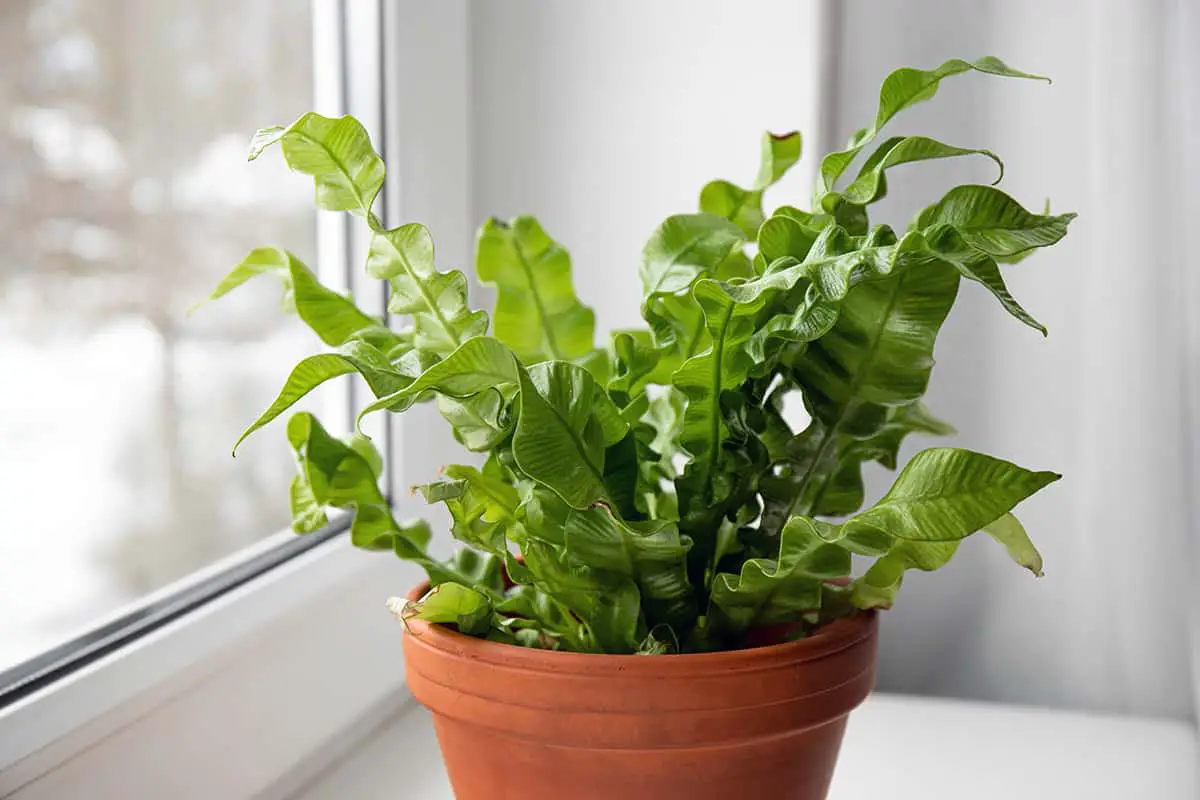
The Asplenium Nidus, commonly known as the Standard Bird’s Nest Fern, features dark green, long, and leathery fronds. You’ll find its wavy leaves creating a ‘bird’s nest’ appearance which contributes to its name.
Asplenium Nidus ‘Osaka’
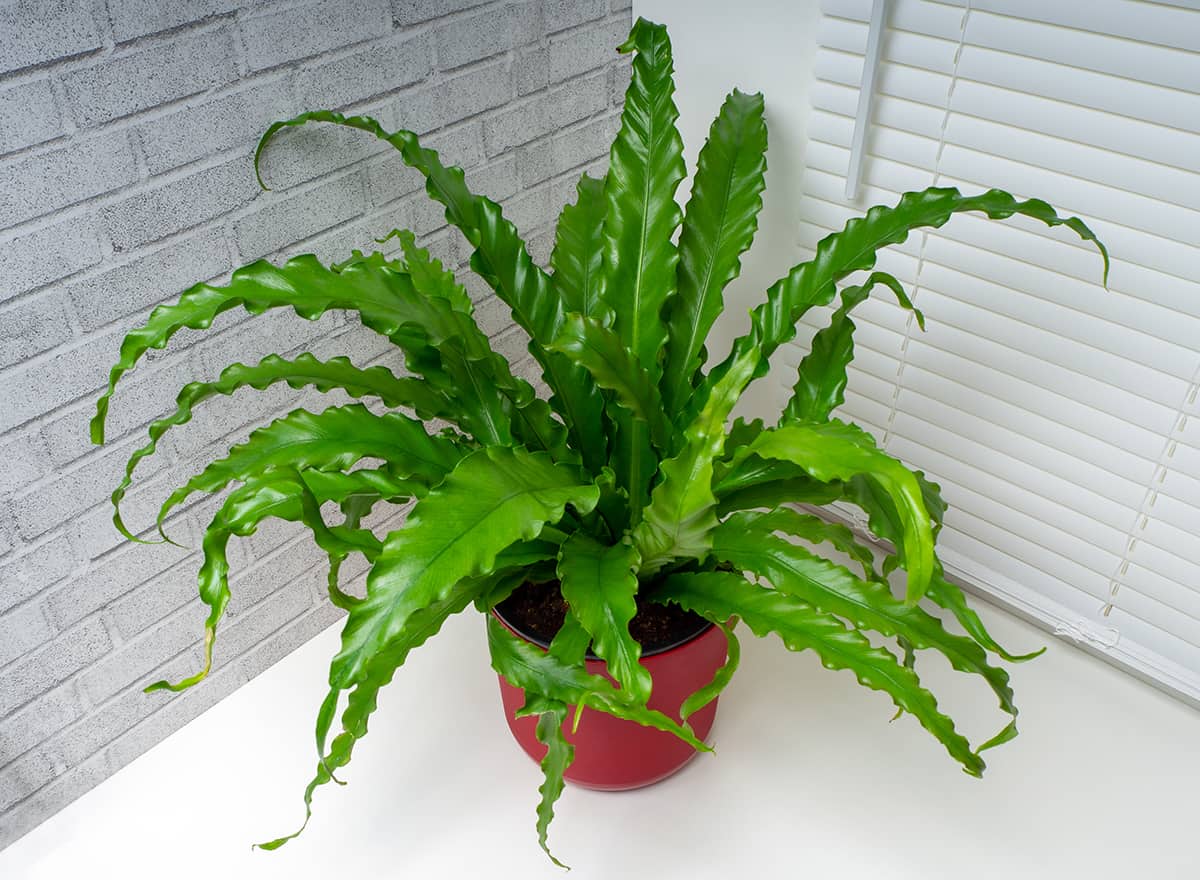
The Asplenium Nidus ‘Osaka’ boasts wider fronds with unique undulating edges. They give the plant a distinct look compared to its counterparts. The lush foliage adds a tropical touch to any living space.
Asplenium Nidus ‘Antiquum’
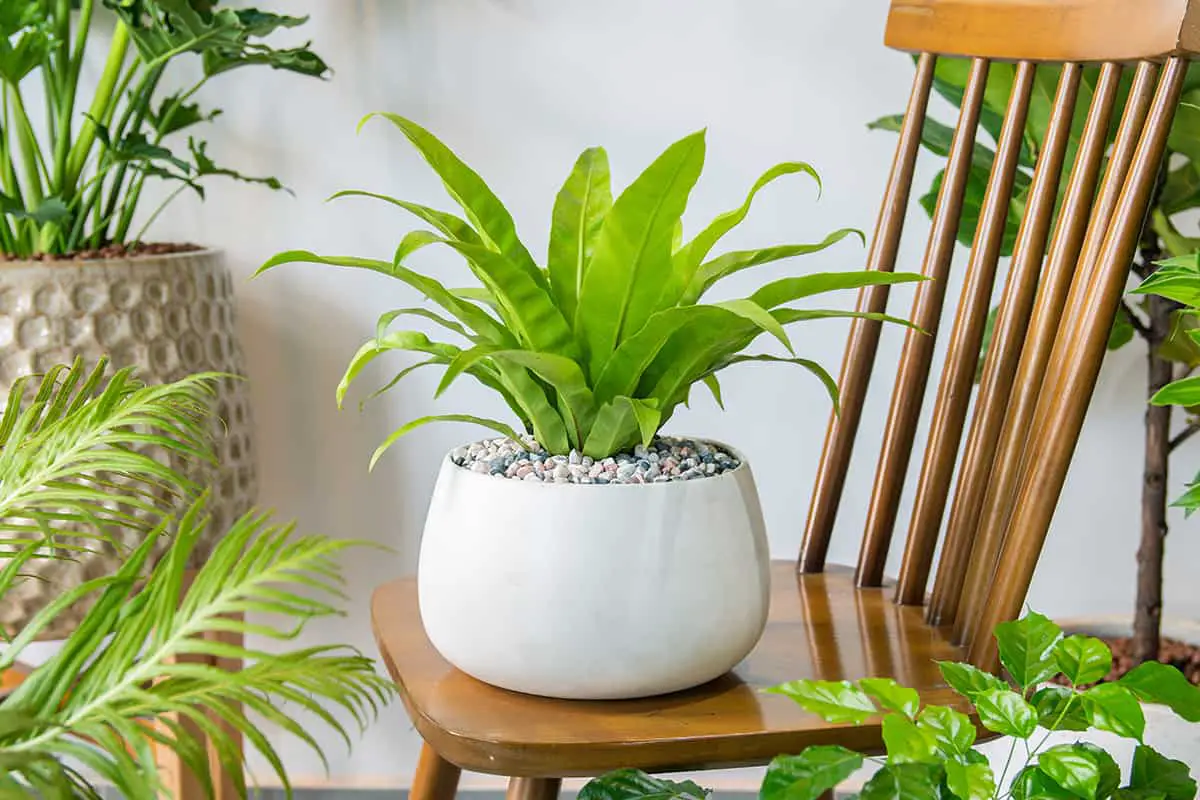
The Asplenium Nidus ‘Antiquum’, known for its serpentine fronds, exhibits long leaves with wavy margins. The fronds arch gracefully, giving it an elegant yet striking appearance.
Asplenium Nidus ‘Fimbriatum’
Another variety, the Asplenium Nidus ‘Fimbriatum’, is distinguished by its delicate fronds and frilly tips. The fern’s frond edges are adorned with tiny ruffles, adding charm and texture to the plant’s overall appearance.
Asplenium Nidus ‘Victoria’
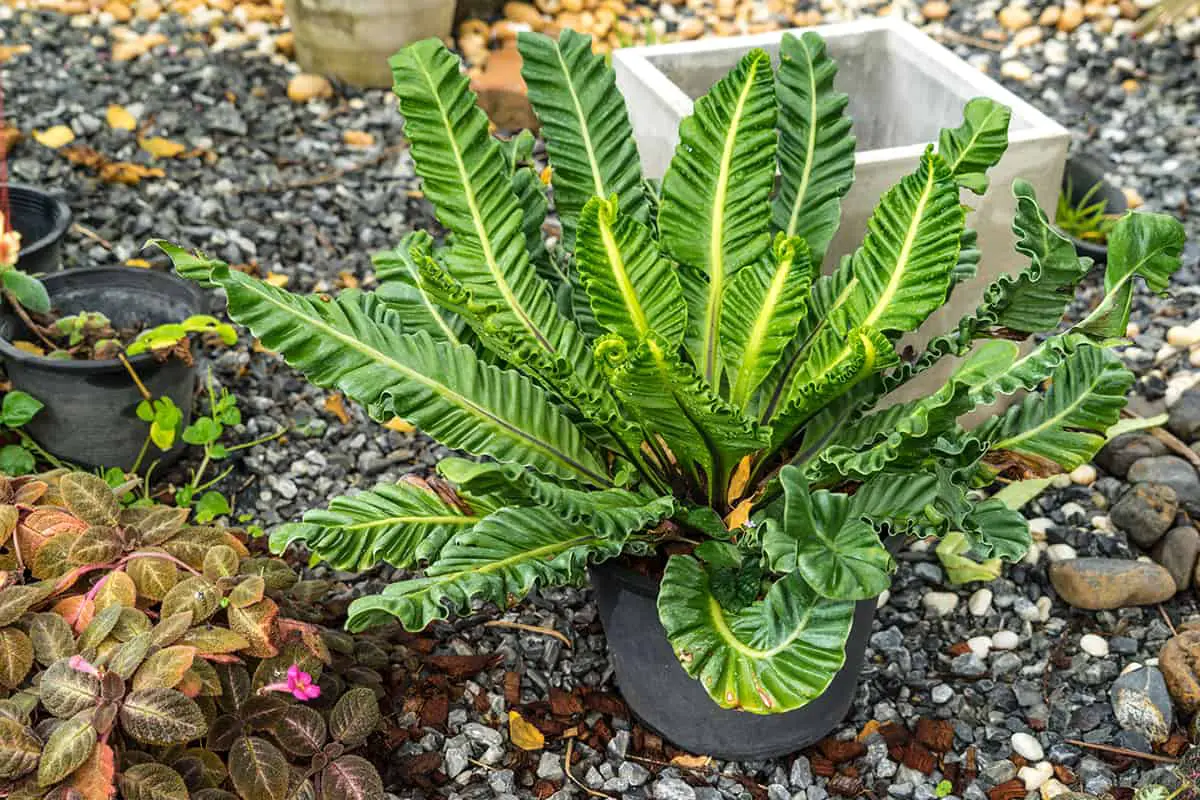
The beautifully symmetrical Asplenium Nidus ‘Victoria’ features V-shaped fronds with deep lobes along the edges. This unique lobed pattern sets it apart from other Crispy Wave varieties, making it an interesting addition to your fern collection.
Asplenium Antiquum ‘Leslie’

Lastly, the Asplenium Antiquum ‘Leslie’ showcases glossy green fronds that surround a central rosette. It has a more compact and tighter growing habit compared to the other varieties, lending a neat and well-groomed appearance to your space.
Frequently Asked Questions
Why are the leaves of my Crispy Wave Fern turning brown?
The leaves of your Crispy Wave Fern may brown due to underwatering or insufficient humidity. To keep the leaves healthy, maintain consistent moisture in the soil and avoid overwatering. Humidity can also play a role in leaf browning. Misting your fern can help maintain proper moisture levels.
Are Crispy Wave Ferns safe for cats, or are they toxic?
Crispy Wave Ferns are safe for cats and are non-toxic to pets. You can keep them indoors without worrying about causing harm to your feline friends. However, it is still important to monitor your pets’ behavior around the plants, as excessive chewing or eating can lead to digestive issues.
What are the optimal conditions for growing a Crispy Wave Fern indoors?
The optimal conditions for successfully growing a Crispy Wave Fern indoors include indirect sunlight, well-draining soil, and moderate humidity. Crispy Wave Ferns can adapt to various lighting conditions, but they thrive best when receiving indirect sunlight. Make sure their soil retains moisture, but avoid potential standing water. A high level of air moisture ensures your fern remains healthy and attractive.
Can Crispy Wave Ferns thrive in a bathroom environment?
Crispy Wave Ferns can indeed thrive in a bathroom environment. The humidity in bathrooms is often higher than in other rooms, so it provides a suitable environment for ferns to grow. Ensure the bathroom receives natural, indirect sunlight and has good air circulation to promote optimal growth.
